10 Best Huawei Smartphones in the World (April 2024)
Since 2019, the United States has stated that Huawei inserts spying technology into its products. Due to this security reason, America banned various companies in the country from working with Google. As a result, Huawei cannot obtain a Google Mobile Services license and is also prohibited from marketing phones with 5G capabilities.
This situation has undoubtedly had a significant impact on Huawei's product line, which had previously attracted a lot of attention. Remarkably, this setback has not made Huawei flinch. Instead, the company is actively working to build its own ecosystem, known as HarmonyOS.
Despite facing various obstacles, Huawei has managed to continue producing various high-end smartphones. In fact, their high-end smartphone models consistently rank among the best in camera quality according to DxOMark tests. So, which Huawei phones stand out as the best? Let's go through the list below.
1. Huawei Mate 60 Pro+

The Huawei Mate 60 Pro+ sits at the top of the Huawei Mate 60 Series, with specifications that surpass its siblings. Specifically, its memory capacity is the largest, with 16 GB of RAM, an important feature that improves overall performance.
With this capacity, the performance will be more optimized. Moreover, the Huawei Mate 60 Pro+ is powered by a Huawei-made chipset, the Kirin 9000S. This chipset is made with 7 nm fabrication with a clock speed of up to 2.62 GHz.
One of the most attractive attributes of the Huawei Mate 60 Pro+ undoubtedly lies in its camera system. On the back, it shows off a versatile triple camera setup. The primary main camera is a 48 MP main camera featuring a variable aperture (f/1.4-f/4.0), accompanied by a 48 MP telephoto periscope lens capable of up to 3.5x optical zoom.
Remarkably, these two cameras not only share the same high resolution, but are also equipped with Optical Image Stabilization (OIS) for stable shooting. Complementing this setup is a 40 MP ultrawide camera that offers a wide field of view of up to 120 degrees.
Whether you're into photography or videography, this rear camera proves to be very reliable, delivering up to 4K recording quality at 60 fps with gyroscopic Electronic Image Stabilization (EIS) support.
On the front, the Huawei Mate 60 Pro+ continues to impress with its camera capabilities. Equipped with a 13 MP ultrawide sensor and a 3D Time-of-Flight (TOF) depth sensor, which enhances biometrics and enables a wide-angle perspective, making it an excellent choice for vlogging, allowing you to capture more content in a single frame.
2. Huawei Mate X5

The Huawei Mate X5 stands out as one of Huawei's foldable smartphones that offers the best performance. This smartphone is powered by the Kirin 9000S chipset, a product of Huawei and SMIC, which is known for its powerful performance thanks to its 7 nm fabrication process and an impressive clock speed of up to 2.62 GHz.
What sets the Huawei Mate X5 apart is its large memory capacity. This innovative phone boasts an incredible 16 GB of RAM and provides up to 1 TB of internal storage. In addition, the phone also features a hybrid slot for microSD expansion, allowing users to increase storage capacity as needed.
The camera capabilities of the Huawei Mate X5 are another highlight. It features a versatile triple camera setup on the back, consisting of a 50 MP main camera, a 13 MP ultrawide lens, and a 12 MP telephoto periscope lens capable of 5x optical zoom.
Both the main camera and periscope lens are equipped with Optical Image Stabilization (OIS) for stable shooting. Video recording is equally impressive, supporting 4K at 60 fps with gyroscopic Electronic Image Stabilization (EIS).
As a foldable phone, the Huawei Mate X5 boasts a dual-screen design, adding to its allure. The main screen, located on the inside, has a large 7.85-inch size and uses a 2K resolution Foldable OLED panel.
In contrast, the external display measures 6.4 inches and features a Full HD Plus resolution OLED panel. Remarkably, both screens support a dynamic 120 Hz refresh rate, enhancing the overall user experience.
3. Huawei Mate X3

One of the standout features of the Huawei Mate X3 is its slim, foldable design. Amazingly, when unfolded, the device is only 5.3 mm thick and weighs only 239 grams. This is a significant weight reduction compared to its predecessor, which stood at 295 grams.
Despite its slim build, the Huawei Mate X3 doesn't sacrifice on specifications. Specifically, the phone offers a dual-screen setup, with a 7.85-inch main screen. This primary display uses a foldable 2K OLED panel with a wide DCI-P3 color gamut.
The secondary screen, measuring 6.4 inches, features a Full HD Plus OLED panel. Both screens, despite the difference in size, provide an impressive visual experience and support an adaptive refresh rate of up to 120 Hz.
In terms of durability, the Huawei Mate X3 is IPX8 certified, making it waterproof and capable of withstanding depths of up to 1.5 meters for 30 minutes.
The camera system on the Huawei Mate X3 is also very capable, featuring a trio of lenses: a 50 MP main camera, a 13 MP ultrawide lens, and a 12 MP telephoto periscope lens with up to 5x optical zoom capability.
Interestingly, both the main camera and telephoto periscope lens are equipped with Optical Image Stabilization (OIS) for stable and clear shots. The Huawei Mate X3 offers 12 GB of RAM paired with 1 TB of internal storage, ensuring ample space for your data and apps.
4. Huawei Mate 60 Pro
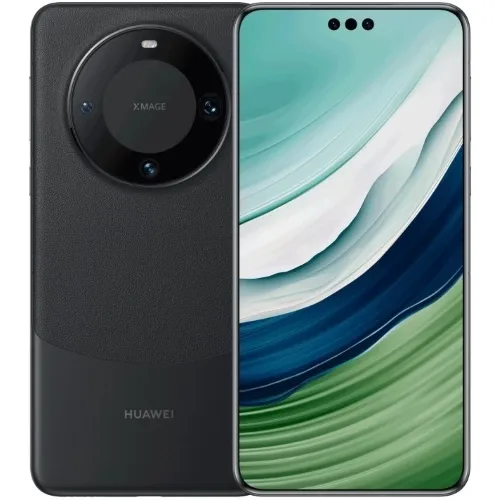
The Huawei Mate 60 Pro is part of the Huawei Mate 60 Series, and leans more towards the "Pro Plus" version than the standard variant. This similarity is seen clearly in its design, especially in the front camera setup that features three cutouts. The reason behind this is the similarity of the camera configuration with the version positioned above it.
For the front camera, the Huawei Mate 60 Pro uses a 13 MP ultrawide sensor, equipped with a 3D TOF depth sensor and biometric capabilities, ensuring seamless operation of the face ID functionality. The rear camera setup follows the same pattern.
However, the Huawei Mate 60 Pro uses a 50 MP main camera with variable aperture (ranging from f/1.4 to f/4.0) and a 12 MP ultrawide lens. The telephoto periscope lens remains consistent at 48 MP (f/3.5), offering up to 3.5x optical zoom capability. Notably, both the main camera and telephoto periscope lens feature Optical Image Stabilization (OIS) to improve image stability.
What sets the Huawei Mate 60 Pro apart from the versions above it is the memory capacity it offers. Although slightly smaller, the 12 GB of RAM it provides is more than enough. Also, it comes with up to 1 TB of internal storage capacity, with the added convenience of a hybrid slot for microSD expansion.
Meanwhile, the Huawei Mate 60 Pro relies on Huawei's Kirin 9000S chipset, with a 7 nm fabrication process that ensures powerful performance even for resource-intensive tasks. Impressively, the device also boasts a commendable battery capacity of 5000 mAh, paired with 88 W fast charging, allowing for a quick 100% charge in just 30 minutes.
5. Huawei Mate 60
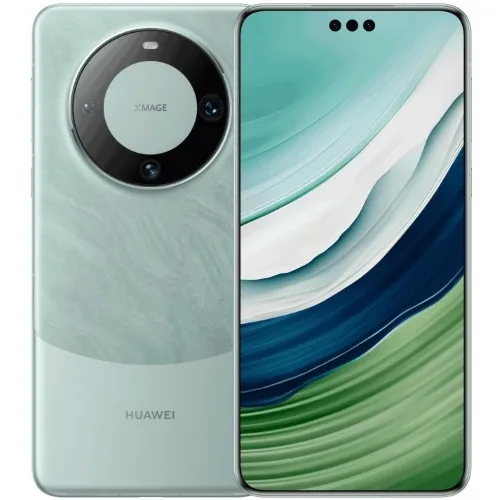
The Huawei Mate 60 represents the standard offering in the Huawei Mate 60 Series. While it may come with slightly lower specs compared to its two counterparts, it remains a formidable competitor in its category and is worth considering.
One aspect that sets it apart is its camera system. The Huawei Mate 60 offers a triple camera configuration on its back. This consists of a 50 MP main camera that features a variable aperture (ranging from f/1.4 to f/4.0) and is supported by Optical Image Stabilization (OIS).
There's also a 12 MP telephoto periscope lens that is capable of an impressive 5x optical zoom, surpassing the other two models. This telephoto lens also makes use of OIS for stabilization.
Completing the trio is a 12 MP (f/2.2) ultrawide camera with a 120-degree wide field of view. Unfortunately, the front-facing camera is a 13 MP ultrawide without a 3D TOF sensor. Nonetheless, its video recording capabilities remain on par with the other two models.
Another captivating feature of the Huawei Mate 60 is its performance. The phone is powered by Huawei's Kirin 9000S chipset, which is manufactured using a 7 nm process. Its performance is further optimized with 12 GB of RAM and offers the option of up to 1 TB of internal storage.
In addition, it includes a hybrid slot for microSD cards, which allows users to expand their storage capacity as needed. In other ways, the Huawei Mate 60 is very similar to other models in the series. It features an OLED LTPO display with a smooth 120 Hz refresh rate, IP68 certification for water and dust resistance, and a comprehensive set of connectivity options and sensors.
6. HUAWEI P60 Pro

The HUAWEI P60 Pro has high-quality features, including its screen, performance, and camera. The screen features an OLED panel that displays colors vividly and realistically.
It also has LTPO technology, which allows the screen to adjust its refresh rate from 1 to 120 Hz. This technology not only makes the display smoother but also helps the battery last longer.
Additionally, the smartphone delivers excellent performance for gaming. It can handle the game Genshin Impact at the highest settings without any issues, and multitasking with heavy applications runs smoothly.
The device includes three cameras on the back: a 48 MP wide-angle camera, a 48 MP telephoto camera, and a 13 MP ultrawide sensor. Interestingly, the ultrawide camera supports autofocus, a feature not commonly found in many other phones.
The front camera is equally impressive. It features an ultrawide function that's perfect for taking pictures and recording videos with a broad field of view. Both the rear and front cameras can record 4K video at 60 FPS, making this phone a great tool for content creation.
Despite these strengths, the HUAWEI P60 Pro has a significant drawback. It does not support Google Mobile Services (GMS), which means it cannot natively run Google applications.
7. Huawei Mate 50 Pro
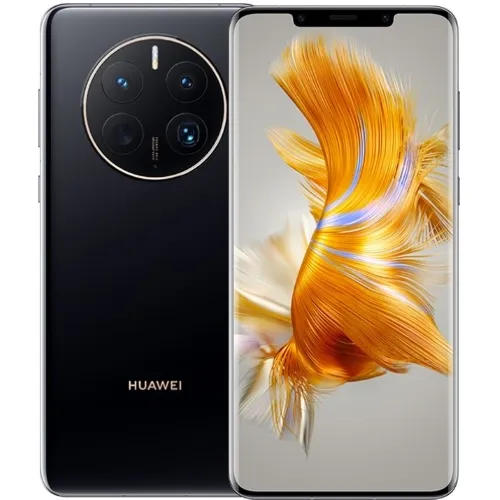
The Huawei Mate 50 Pro offers a design characterized by a distinctive notch at the top. This notch has a slightly elongated shape, which houses the 13 MP selfie camera and the 3D Time-of-Flight (ToF) camera sensor.
Moving on to the back, the smartphone has a sizable camera module that houses three embedded cameras. These three cameras consist of a 50 MP main camera with an adjustable aperture ranging from f/1.4 to f/4.0, a 13 MP ultrawide camera with f/2.2 aperture, and a 64 MP telephoto camera with f/3.5 aperture.
These cameras are equipped with Optical Image Stabilization (OIS), Laser AutoFocus (AF), Phase Detection AutoFocus (PDAF), and support video recording up to 4K resolution with gyroscopic Electronic Image Stabilization (EIS).
The Huawei Mate 50 Pro is powered by Qualcomm's top-tier chipset, Snapdragon 8+ Gen 1. It has eight CPU cores and comes with an Adreno 730 GPU for powerful graphics processing. In terms of storage, the Huawei Mate 50 Pro offers options with 8 GB of RAM and 256 GB or 512 GB of storage capacity.
To enhance overall performance, the Huawei Mate 50 Pro is equipped with a 4700 mAh battery. This battery is supported by fast charging technologies, including 66 W wired fast charging, 50 W wireless fast charging, and 5W reverse wireless charging.
Additional features include an on-screen fingerprint sensor, IP68 certification for water and dust resistance, and Huawei Kunlun Glass for screen protection, among others.
8. HUAWEI P60
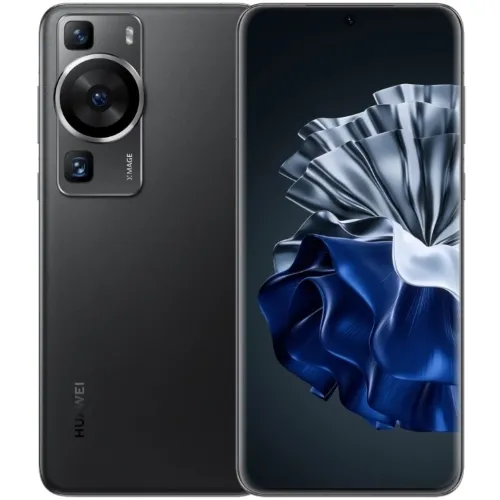
Like the Pro version, the HUAWEI P60 also boasts some remarkable features. One great feature in its camera setup is the 12 MP telephoto periscope camera, which surpasses the Pro variant.
While the Pro version includes a standard telephoto camera, the HUAWEI P60 offers a periscope telephoto camera that allows for greater optical magnification—up to 5x compared to the Pro's 3.5x. However, the ultrawide camera on the P60 uses fixed focus, unlike the autofocus feature in the Pro version.
The HUAWEI P60 also provides an appealing visual display. It features a 6.67-inch LTPO OLED screen with a resolution of 1220 x 2700 pixels, which is higher than the 1080p resolution found on most other smartphones.
The phone's battery life is robust, with a capacity of 4,816 mAh that can last through a long day. For charging, the HUAWEI P60 is equipped with 66-watt fast charging and 50-watt wireless charging. Similar to the Pro model, the regular HUAWEI P60 requires the Gbox app to run Google apps since the phone does not support Google Mobile Services.
9. Huawei Mate 50 RS Porsche Design
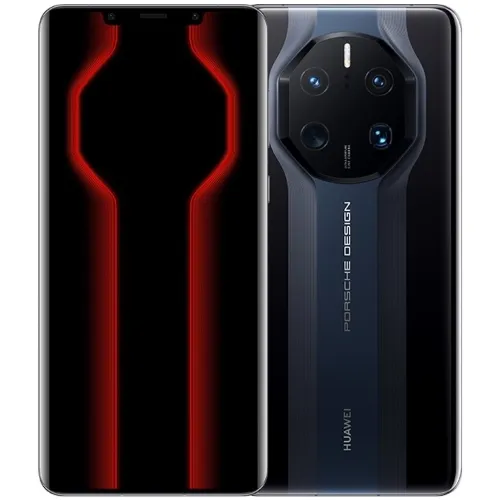
The Huawei Mate 50 RS Porsche Design embraces a more futuristic aesthetic and features a slightly busier rear design compared to other models in the Huawei Mate 50 Series. On the back, you'll find an octagonal-shaped camera module with smoothly curved edges.
Inside this module, there are three cameras: a 50 MP main camera (with apertures ranging from f/1.4 to f/4.0), a 13 MP ultrawide camera (f/2.2), and a 48 MP telephoto camera (f/3.0).
While the specs may be slightly smaller than the "Pro" variant, the rear camera functions are quite similar, including Phase Detection AutoFocus (PDAF), Laser AutoFocus (AF), Optical Image Stabilization (OIS), and video recording support up to 4K resolution with gyroscopic Electronic Image Stabilization (EIS).
On the front, you will find a 13 MP selfie camera along with a Time-of-Flight (ToF) camera sensor. The display of the Huawei Mate 50 RS Porsche Design is a 6.74-inch OLED panel. This display produces an impressive resolution of 1212 x 2616 pixels, with a refresh rate of 120 Hz and a touch sampling rate of up to 300 Hz.
Regarding performance and battery life, the Huawei Mate 50 RS Porsche Design is very similar to the "Pro" version, as it also boasts a powerful Qualcomm Snapdragon 8+ Gen 1 chipset, coupled with 12 GB of RAM and 512 GB of internal storage. Also, the smartphone is equipped with a 4700 mAh battery and supports 66 W fast charging.
10. Huawei P50 Pro
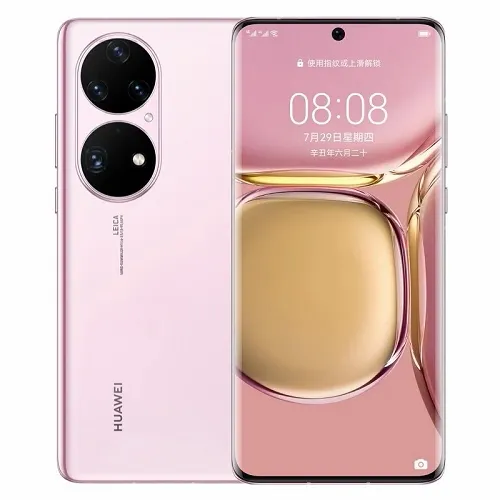
The Huawei P50 Pro is a smartphone king in the world of photography, being ranked No. 1 on DxOMark as the smartphone with the best camera in 2021. It is powered by a 50 MP wide-angle lens (f/1.8), which also features Optical Image Stabilization (OIS) for stable shots.
Alongside this main camera, the Huawei P50 Pro offers a 64 MP (f/3.5) camera that comes with OIS, supporting up to 3.5x optical zoom. Complementing this is a 13 MP ultrawide camera and a 40 MP monochrome lens, allowing for black and white shots with great contrast.
On the front, you'll find a 13 MP (f/2.4) selfie camera, elegantly integrated into the punch-hole design. The outstanding camera performance of the Huawei P50 Pro thanks to its collaboration with Leica, sets a new benchmark that other flagship smartphones are challenging to match.
However, there are some important aspects to consider with the Huawei P50 Pro. First, it does not support 5G mobile networks. Secondly, it does not include the Google Mobile Services ecosystem, which may have an impact on app availability and usage for some users.
This is the list of the best Huawei smartphones recommended by Carisinyal. Huawei's top-tier phones often come with a premium price tag, but they offer specs and features that justify the investment. However, Huawei devices do not come with Google Mobile Services, which is an important consideration before making a purchase.
